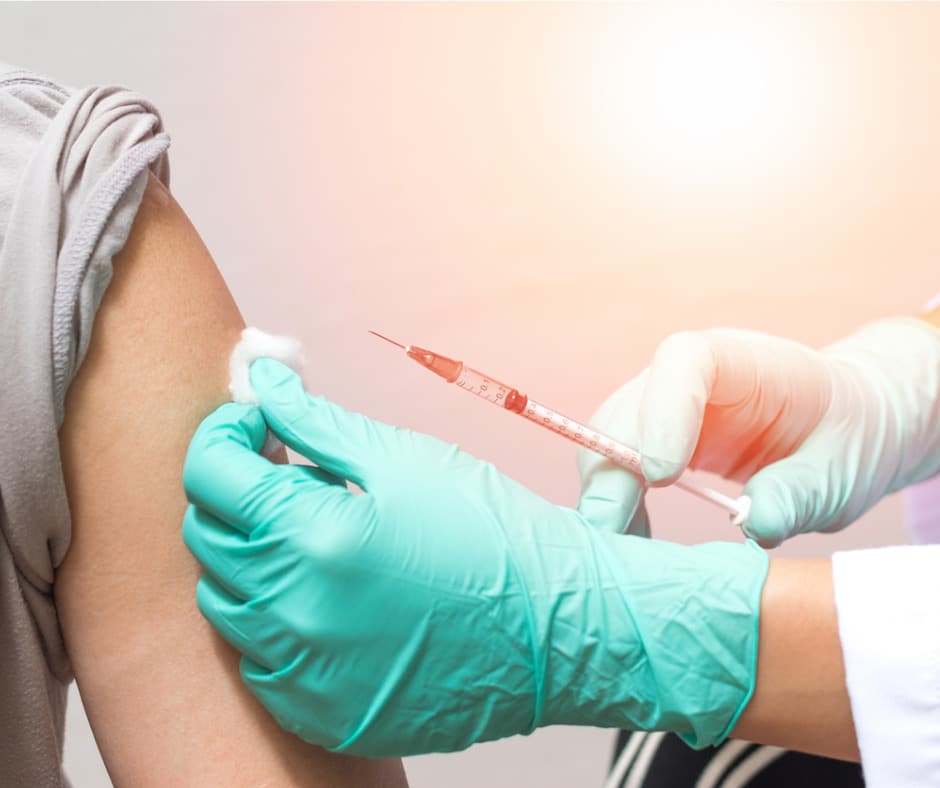When we go to the grocery store, many us look at labels on the foods we buy to see the ingredients. We want to know what we’re putting into our bodies.
Why then do almost none of us know the ingredients of the vaccines we get?
Tens of millions of Americans have lined up to get vaccinated against COVID-19. But very few know what’s going into their arm.
We’re about to tell you…
Ingredient Lists for the Pfizer and Moderna COVID-19 Vaccines
The two vaccines now available—one from Pfizer and the other from Moderna—have similar ingredients. That’s because they use the use the same technology.[1]
The active ingredient is something called messenger RNA or mRNA. It is a piece of genetic material from the coronavirus. It can’t cause infection. But once inside your body, it stimulates your immune system to make antibodies against the virus.
mRNA is fragile. If you simply injected yourself with it, it would almost immediately breakdown. It needs a component to protect it and help it bind to cells, which it can’t do on its own.
That’s why both vaccines also contain fat droplets. They protect the mRNA and provide a “greasy” exterior that helps the mRNA slide into cells.[2]
One type of fat used in both vaccines is cholesterol. The shots don’t have enough of it to raise your cholesterol level or affect your heart.
Besides mRNA and fats, both vaccines also contain salts and sugars. They are added as preservatives. The Moderna vaccine also contains an acid preservative.
The good news is that unlike the vaccines of the past, these shots do not use potentially toxic preservatives such as formaldehyde or thimerosal, a mercury compound.[3]
The bad news is that the vaccines share an ingredient that has raised concerns among some doctors and is already causing problems in some patients. We’ll tell you more about it in a moment. First, we’ll give you the ingredient lists.[4]
Here’s what’s in the Pfizer vaccine:
- mRNA: As we mentioned, this is the active ingredient. The Pfizer and Moderna vaccines use slightly different versions of mRNA.
- Fats: cholesterol, ALC-0315, DSPC, polyethylene glycol
- Salts: sodium chloride (table salt), potassium chloride, potassium phosphate, dibasic sodium phosphate dehydrate
- Sugars: sucrose (table sugar)
Here’s what’s in the Moderna vaccine:
- mRNA
- Fats: cholesterol, SM-102, DSPC, polyethylene glycol
- Salts: sucrose
- Acid stabilizers: acetic acid, tromethamine, tromethamine hydrochloride
Polyethylene glycol (PEG) is in both vaccines. And it is a prime suspect in the severe allergic reactions that some people have suffered after getting the shots.[5]
Up until now, PEG had never been used before in a vaccine. But it is found in drugs that have triggered anaphylaxis. This is the medical term for a potentially life-threatening allergic reaction.
PEG is also used in everyday products such as toothpaste and shampoo. It was long thought to be perfectly safe. But a growing body of evidence suggests it is not.
A 2016 study at the University of North Carolina found that up to 72% of people have at least some antibodies to PEGs. About 7% have a level that could be high enough to predispose them to a severe allergic reaction, the study found.[6]
Some companies have dropped PEG from their products as a result of allergic reactions. Both Pfizer and Moderna have acknowledged the risk that the compound poses.[7]
Dr. Elizabeth Philips is a drug allergy researcher at Vanderbilt University Medical Center. She said that if you decide to get vaccinated it’s crucial that you wait at the vaccination site at least 30 minutes after getting the shot.
That way, if you have an allergic reaction you can get prompt treatment.
Dr. Phillips notes that we really don’t know the long-term safety of the vaccines because they were tested for only about two months before being rolled out. In the past, vaccines were tested for five to 15 years before the public received them.
But we do know about one short-term problem: anaphylaxis.
“At least anaphylaxis is something that happens quickly,” she said. “It’s something that you can be prepared to recognize early and be prepared to treat early.”
Editor’s Note: Read our monthly newsletter Independent Healing to discover the most-effective, science-backed strategies to stay healthy during the pandemic.
Learn about the vitamin supplement Dr. Fauci is taking…
Why one mineral is crucial during the pandemic…
How daily aspirin lowers your COVID risk…
The natural supplement that outperforms an emergency COVID drug…
And much more. Get all the details HERE.
Related Articles
Coronavirus: Stop Worrying About Contaminated Surfaces
Pandemic Plane Travel May Be Safer Than You Think
This Is How You’re Likely to Catch Coronavirus
[1] https://www.news10.com/news/whats-in-the-pfizer-and-moderna-covid-vaccines/
[2] https://www.hackensackmeridianhealth.org/HealthU/2021/01/11/a-simple-breakdown-of-the-ingredients-in-the-covid-vaccines/
[3] https://www.cnn.com/2017/02/15/health/thimerosal-vaccine-preservative-explainer/index.html
[4] https://www.madesafe.org/chemicalcallout-polyethylene-glycol-compounds-pegs/
[5] https://www.sciencemag.org/news/2020/12/suspicions-grow-nanoparticles-pfizer-s-covid-19-vaccine-trigger-rare-allergic-reactions
[6] https://pubs.acs.org/doi/abs/10.1021/acs.analchem.6b03437
[7] https://www.sciencemag.org/news/2020/12/suspicions-grow-nanoparticles-pfizer-s-covid-19-vaccine-trigger-rare-allergic-reactions

